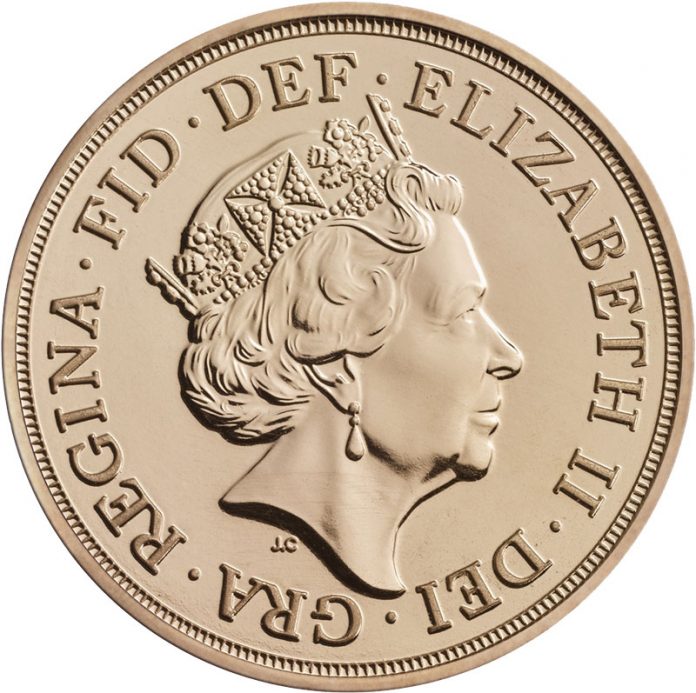
Queen Elizabeth II ruled for longer than most numismatists have been collecting, and since her ascension, after the passing of her father, George VI, to the throne in June 1953, collectible coins portraying her royal image have told the story of her reign.
The Royal Mint Museum cites five coinage portraits of Queen Elizabeth II’s Royal Profile as ‘official record’ of her seven-decade reign. The Royal Canadian Mint has produced four portraits (known as effigies) including, for the first time, two by Canadian artists. Overall, portraits of this enduring monarch span 15 Commonwealth realms: Antigua and Barbuda, Australia, The Bahamas, Belize, Canada, Grenada, Jamaica, New Zealand, Papua New Guinea, Saint Kitts and Nevis, Saint Lucia, Saint Vincent and the Grenadines, Solomon Islands, Tuvalu, and the United Kingdom.
Queen Elizabeth coins range in value from $5 to $9,000 (U.S.) and sell on average, per a JewelAdvisor.com report earlier this year, for about $20. For the collector with a taste for the extravagant, her largest official portrait is also among the world’s 10 rarest gold/silver coins. The Queen Elizabeth II Million Dollar Coin (2007), of 999.99% refined pure gold, is an empirical 53 centimeters (20.8”) in diameter and weighs 100 kilos (220 pounds).
There have also been special portraits created for milestones such as birthdays, anniversaries and jubilees, including the 2022 Platinum Jubilee image by coinage artist John Bergdahl (who also produced the coins celebrating the 2012 London Olympic and Paralympic Games). Like the 1953 coronation crown created by Gilbert Ledward RA, Elizabeth II – the first British ruler to reach the Platinum Jubilee milestone – is on horseback, riding in the uniform of the Horse Guards, but differentiated from prior portraits by the addition of the royal garter from the Royal Coat of Arms.
The Royal Mint, which has struck the coins of the British monarchy since Alfred the Great (c. 880-1400), has struck all the coins of Queen Elizabeth II’s reign and says each “portrays this remarkable woman from the unique viewpoint of each artist’s interpretation and style, combining to chart an era in British history referred to as the ‘new Elizabethan Age.’ These coins have told the story of Her Majesty’s journey from a young queen to the experienced, respected head of state she is today.”
The coins of her realm may vary in value but the stories behind their portrait remain priceless.
The First Definitive Coinage Portrait (1953)
Two female artists are credited with Britain’s first impression of its 27-year-old monarch. Photographer Dorothy Wilding took the photo of Her Majesty in a profile that informed the submissions to The Royal Mint Advisory Committee (RMAC). The committee also chose Mary Gaskell Gillick, a bas-relief sculptor who worked from a small chapel in a Moravian burial ground in Chelsea.
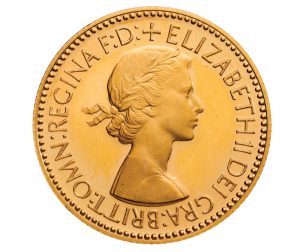
COURTESY OF THE ROYAL MINT
Her design, the last to be used on pre-decimal coinage, was also the first to portray Elizabeth uncrowned, bearing a simple laurel wreath. HRH Prince Philip, Duke of Edinburgh, visited Glick’s studio as she refined her work. He contested her portrayal of his young bride’s neck. Humphrey Paget (creator of the coinage portrait of Her Majesty’s father, George VI, and runner-up to create Elizabeth II’s) defended Glick. “I took measurements.
The Queen has a long neck,” said Paget. The Daily Telegraph reported, “The Duke found no fault with the length but disapproved of the curve.”
The Second Definitive Coinage Portrait (1968)
With the advent of decimalization, a new portrait was hoped to distinguish the new coins, introduced in 1968, from the old. Sculptor Arnold Machin stated that he hoped to produce “a design with charm and dignity, yet without sentimentality.”
He wished to, “Recapture something of the richness and vitality of earlier coins which has not seemed possible with the limiting techniques of modern mass production.”
The Queen sat four times for sketches and the Machin series also led to the 4d postage stamp design issued in June 1967. It was later called one of the world’s most reproduced works of art with 320 billion copies.
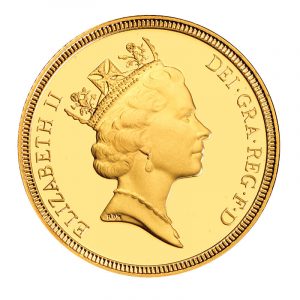
COURTESY OF THE ROYAL MINT
This portrait too was not without encounter from The Duke. Machin recalled friend and artist Peter Greenham sharing how The Queen had, “chatted to him about me. She said, ‘The Duke came in to look at my model and commented that the chin wanted to be stronger and needed more clay, which Mr. Machin did – but as soon as the Duke left he took it off again!”
The Third Definitive Coinage Portrait (1985)
A garden party led the RMAC to its third artist, Raphael Maklouf, who had initially eschewed the photograph provided for the competition. “By coincidence, I was invited to one of the royal garden parties and having been introduced to Her Majesty, I remarked to her that I was working from a less than satisfactory photography.
More Faces of the Monarch
As a Commonwealth country, Canada has included an effigy of the monarch on its coins since The Royal Canadian Mint started production in 1908.
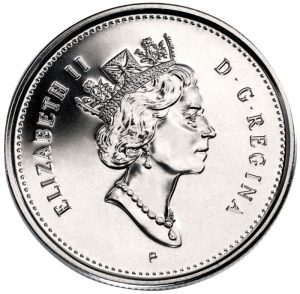
Four versions of Her Majesty Queen Elizabeth II (1953, 1965, 1990, 2003) have appeared. In 2002, a 50-cent Golden Jubilee circulation coin was issued, replicating the 1953 Canadian Coronation Medallion.
The third effigy, 1990-2002, became the first created by a Canadian portraitist, Dora de Pédery-Hunt. Canadian artist Susanna Blunt has designed the current effigy, which chooses to portray The Queen for the first time in the style chosen by her father, George VI, for his coinage, without a crown.
She responded by saying that she would tell Lord Snowdon,” said the Jerusalem-born emigrant, also known for his 15 Stations of the Cross in Brentwood Cathedral.
Indeed a more flattering reference succeeded in securing RDM (his initials are engraved at the base of the Queen’s neck) two live sittings. “Her Majesty exclaimed that I took less time to complete the portrait in front of her eyes than it took photographers to get the ‘right lighting’ and take the photographs,” said Maklouf. He rejected critiques that his portrait was flatteringly young and said his intent was, “To sculpt a symbol, not just a photographic image.”
The Fourth Definitive Coinage Portrait (1998)
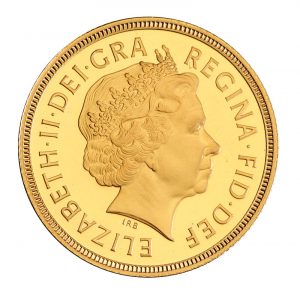
COURTESY OF THE ROYAL MINT
British sculptor Ian Rank-Broadley FRBS has the distinction of commemorating more than one member of the Royal Family and bringing a smile to the face of one in particular.
In 1997, he won the RMAC competition for a new effigy of Elizabeth II.
In 2007, he designed the conjoint portrait of Elizabeth II and Prince Philip on the crown coin celebrating their 60th wedding anniversary.
Later, he designed the gold kilo coin celebrating the Queen’s Diamond Jubilee. In 2021, on what would have been her 60th birthday, his statue of Princess Diana was unveiled at Kensington Palace in London.
Photographs supplied by RMAC for this portrait competition again seemed to lack inspiration, so he reimagined a more mature monarch than his predecessors.
“Age is no respecter of persons, royal or otherwise. Although I was aware that my work might attract criticism, I felt it essential to the integrity of the project for the portrait to be recognizable and not overidealized,” he said.
Coins of Her Realm
His notes outlined changing where the coin’s inscription started and – most dramatically – introducing the hint of a smile to the Queen’s portrait. In comparison to painting an enigmatic Mona Lisa, engraving a smile was, “More difficult because the complex relationship of facial muscles do not allow one to indicate a particular expression without changing the surrounding features and thus, in a subtle way, changing the whole look of the face.”
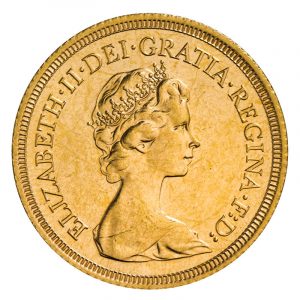
COURTESY OF THE ROYAL MINT
After months spent perfecting a design and overcoming technical issues, he achieved the depiction he sought.
“I hope I may be regarded as having made a valuable contribution to the rich history of coinage in this country.
When I see my initials beneath the royal effigy on the coins as a record of my achievement, I feel honored.”
The Fifth Definitive Coinage Portrait (2015)
“I wanted to make some clear distinctions between the portrait by Ian Rank-Broadley, as Her Majesty really hasn’t aged too much in the years since,” said fifth and current portraitist, Jody Clark, the first designer at The Royal Mint in more than 100 years (since 1902, when George William de Saulles engraved the portrait of Edward VII). Unlike prior contests, this was a closed competition. A panel selected Clark’s design from among a field of anonymous submissions.
Clark’s portrait, approved by Her Majesty’s Treasurer and The Queen herself, depicts Elizabeth II wearing the Royal Diamond Diadem crown from her coronation.
“I looked at the designs of the previous effigies. I also did a lot of research to find more natural, unposed images. I wanted my design to work as part of the set as well as work on its own.”
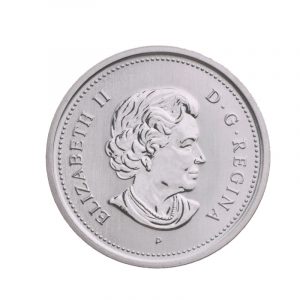
History: The Other Side of the Coin
Part of a tradition dating back more than three centuries, each effigy of a ruling King or Queen faces opposite the direction of their predecessor. The Queen’s father, George VI, faced the left; thus Elizabeth II faces the right and King Charles III will face to the left.
Adam Lawrence, chief executive at The Royal Mint, said Clark’s achievement was a proud moment for a centuries-old craft: “Capturing a portrait on the surface of a coin demands the utmost skill, and is one of the most challenging disciplines of the coin designer’s art.”
This story about the coins of Queen Elizabeth II previously appeared in COINage magazine. Story by LA Sokolowski. To subscribe to COINage magazine click here.












